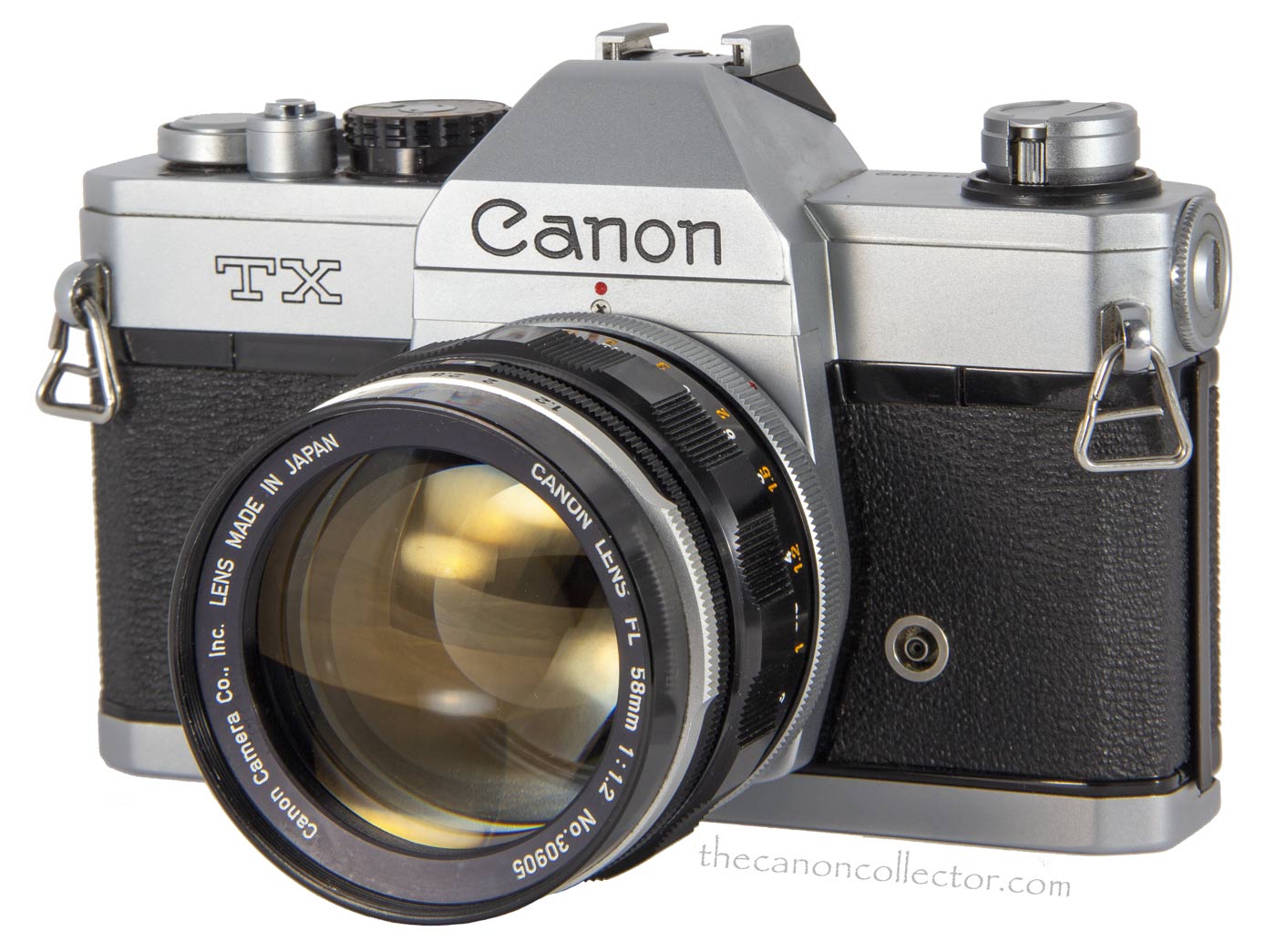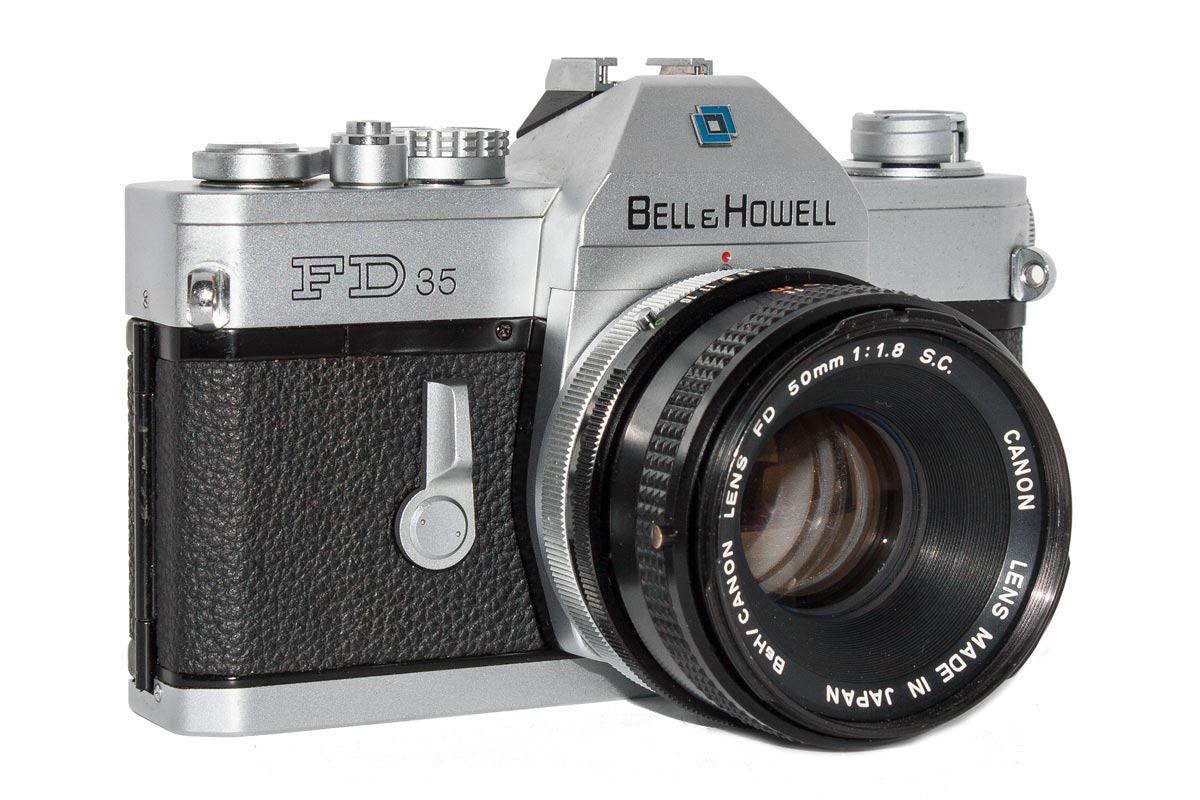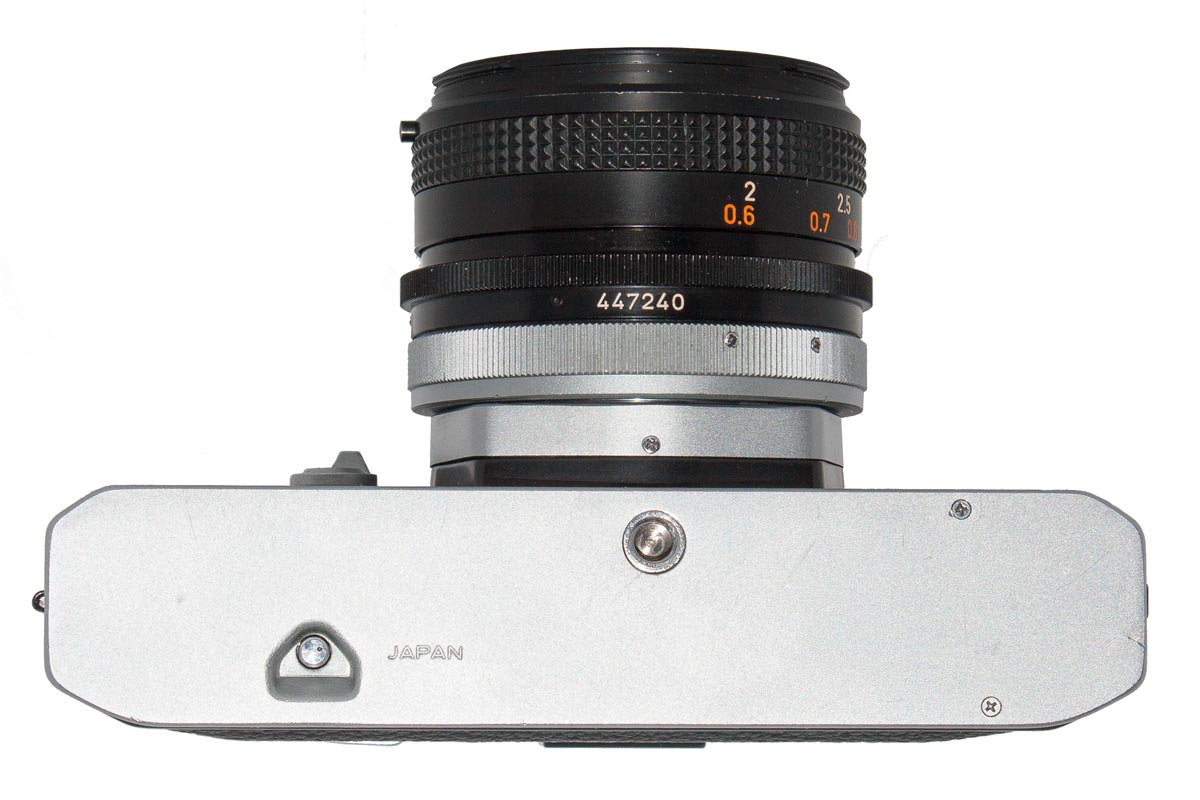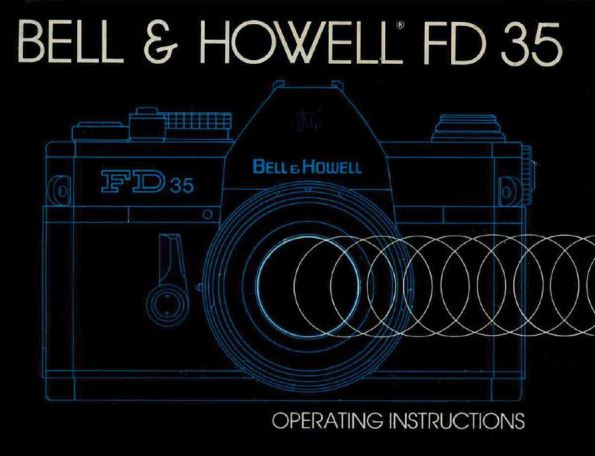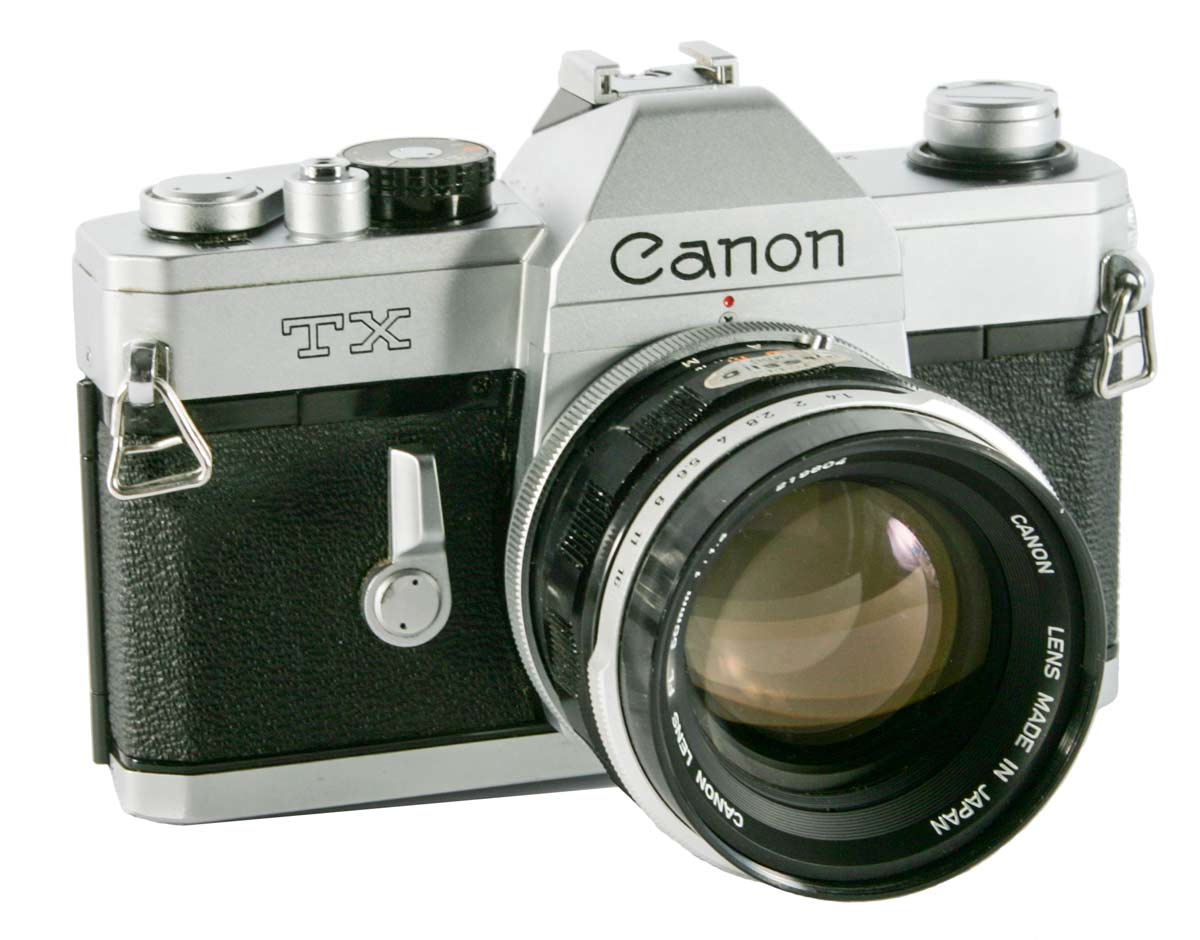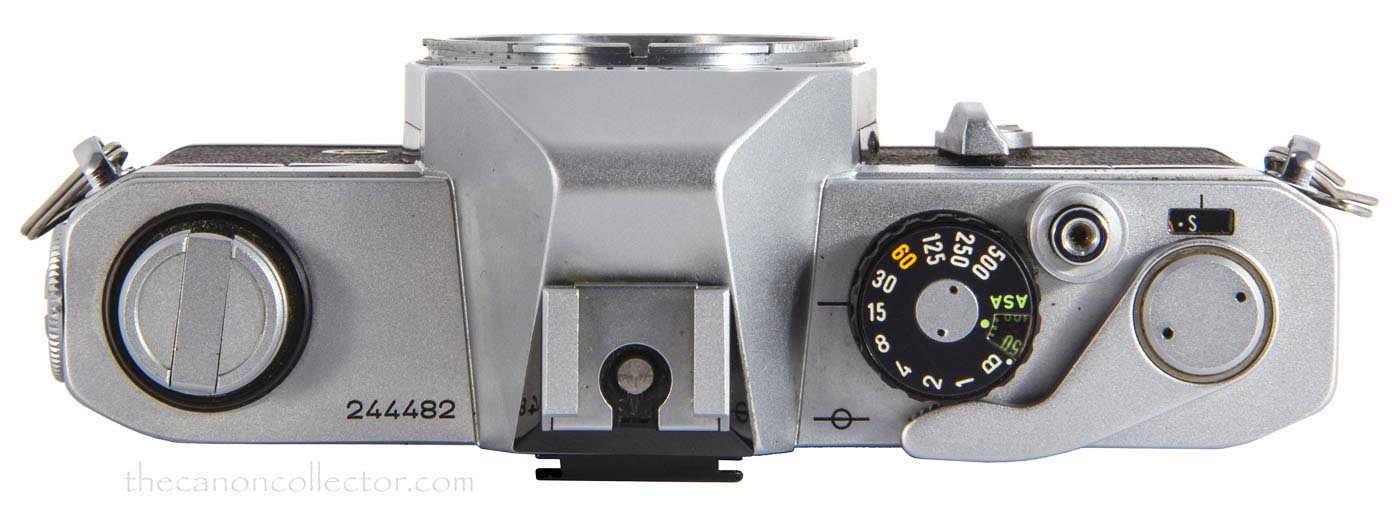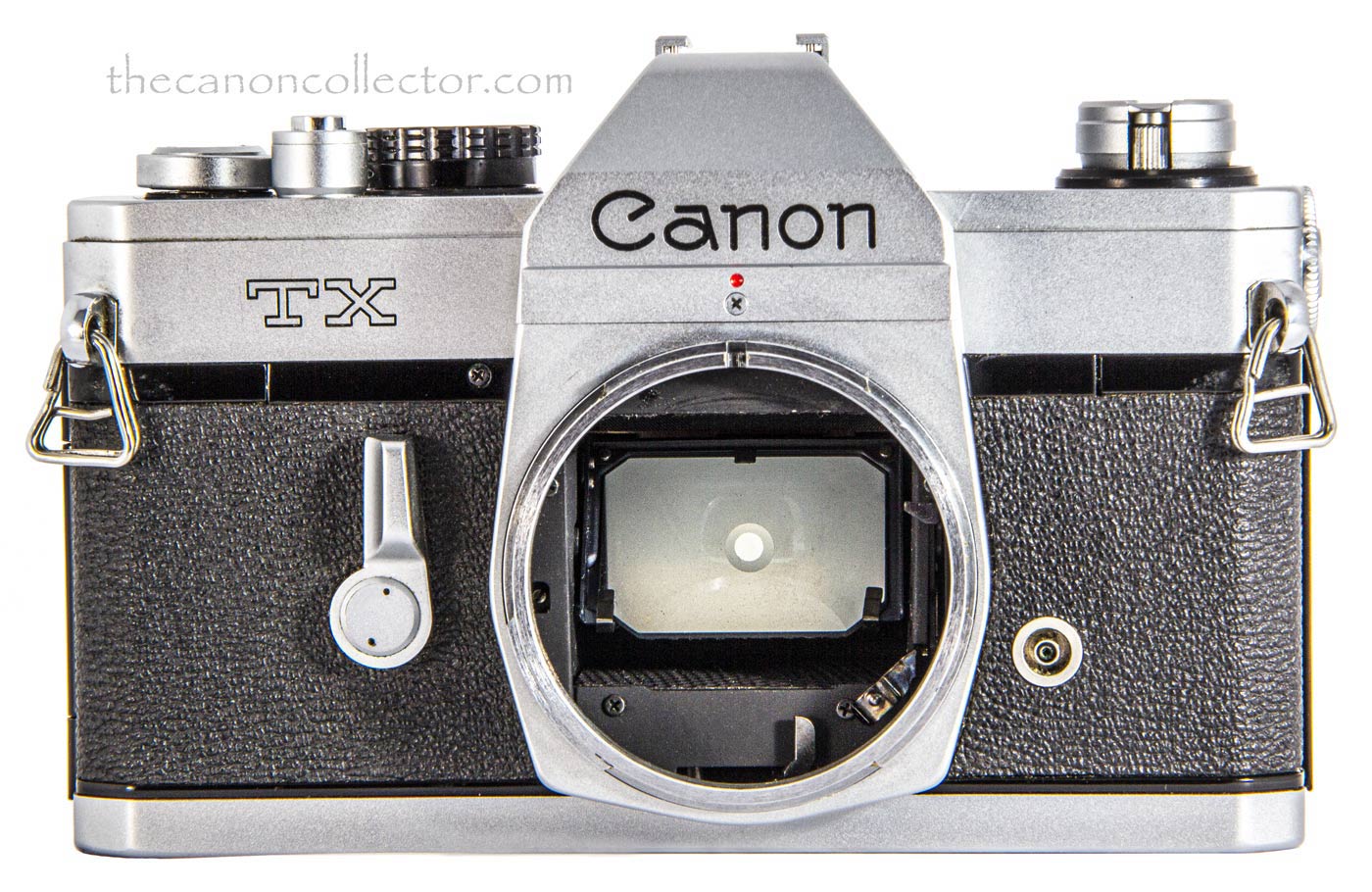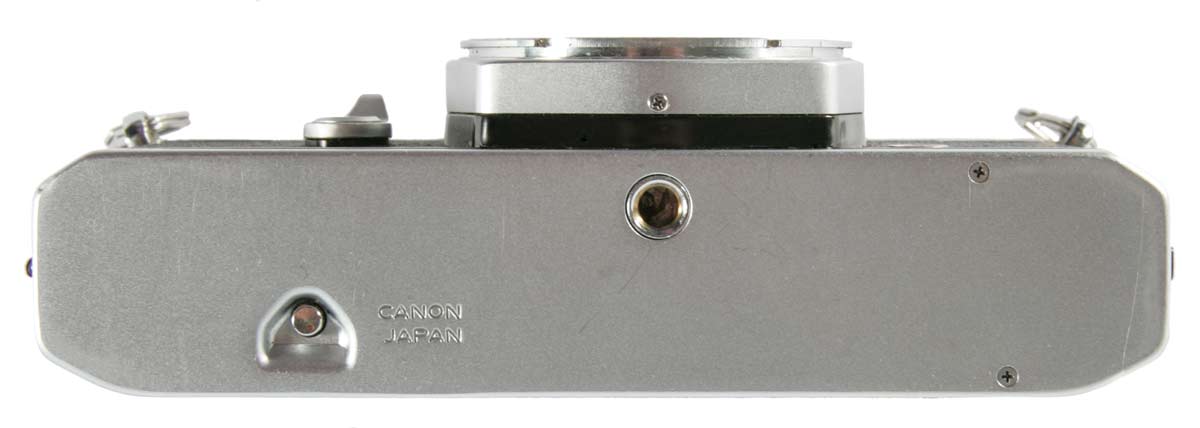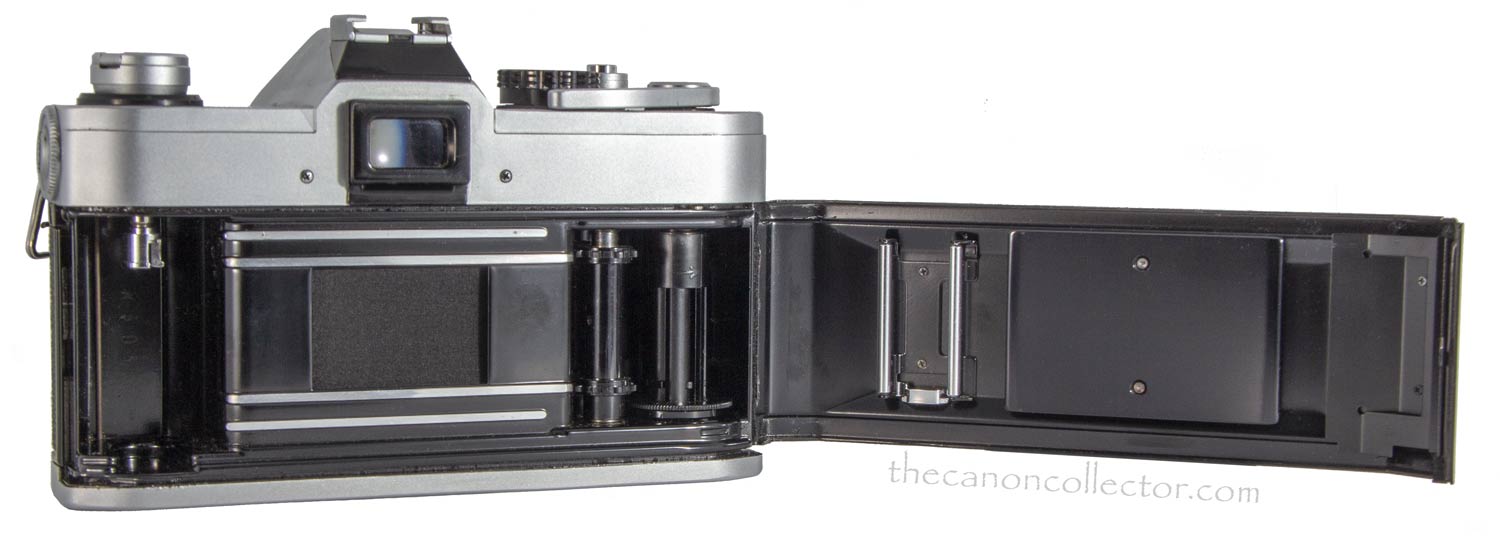This is my TX ( Serial No. 244482). The TX was an entry level camera introduced in March of 1975 based on the Bell & Howell FD 35. Read on for the exciting details.
Canon TX
We can’t talk about the TX without first discussing the Bell & Howell FD35. You will recall that in the piece I have written here about Bell & Howell I explained that B&H was Canon’s agent in the United States from 1961 until around 1976. In the early 70’s B&H wanted a Canon camera to market as their own product as they did with the Auto 35/Reflex and they asked Canon to come up with a model.
At the time Canon’s advanced amateur camera, the FTb, was undergoing minor changes to create the FTb-n, and Canon was looking towards introducing an entry
level model, the TLb, which eventually came out in September 1974. The request for a camera to be branded as a Bell & Howell came at an opportune time. B&H wanted an inexpensive camera, with built in light meter and I am sure they stipulated flash capability because the American public had come to expect easy access to a flash unit.
What Canon proposed was the FD35 which was basically a TLb with a hot shoe. This came to market under the Bell and Howell banner in 1973. (The TLb had an equipment shoe only and flash was accessed thru a PC socket on the front of the camera.)
Once the FD35 and the TLb were on the market Canon had second thoughts about the lack of hot shoe on the TLb and they decided to release the FD35 under the Canon name bringing out the TX which hit the stores in early 1975. Same camera as the FD35, different name.
The Bell & Howell FD35 looks like a Canon because it is a Canon in every detail. Notice the lens is branded “B&H/Canon” Apparently there were 6 lenses in all with that designation (See page 37 of the Manual.).
Even by the standards of the day this was a plain camera. Same quality build but with few features. Not even a Box Top Holder on the back.
And that is the origin of the TX. I am reading between the lines for some of the details but essentially this is the origin of the camera. Personally I like the FD35. It reminds me of my Minolta SR-1 (which predated it by several years) but with a “match needle” light meter added.
The one strong feature of this camera is that it will accept the full line of Canon FD lenses and accessories in spite of the Bell & Howell branding! That means it is an extremely versatile camera capable of taking very fine pictures.
I acquired my FD35 (Serial No. 104694) in 2017 from Green Mountain Camera on E-bay. Really nice folks to do business with. When my camera arrived there was a friendly hand written card with it thanking me for my business. It’s people like this that make this hobby so much fun.
The FD35 is essentially a TLb with a hot shoe. The Canon TX and TLb have black shutter speed dials. It was a manual camera with built in match needle light meter. In other respects, they look identical, which they are under the skin.
Plain on the bottom too. No self timer, no auto loading features, maximum 1/500th shutter speed. But beautiful build, solid, reliable.
You can learn everything you need to know about operating the camera in the Operating Instructions. And it all applies to the TX as well. And to the TLb while your at it!
So, how do we describe the TX. Well, we already have. The TX is the FD35 but branded as a Canon camera. It came to market in September of 1974 and was produced until 1979. The TX was the last of the F series, with the exception of the New F-1 which was introduced in 1981.
This is a bare bones camera with few advanced features. It has no self timer, no on-off switch, no auto loading features, no mirror lock up, and shutter speeds only up to 1/500th of a second. That being said, when you pick this camera up you immediately note the weight and the quality build. This camera has a luxury feel to it. It boasts a match needle light meter, rubberized cloth horizontally moving shutter curtains, hot shoe, and ASA settings from 25 to 1600. But it is a manual camera through and through.
On the down side, the light meter uses the 1.35v PX625 mercury battery which is no longer available. That does not stop me from using the camera by using an external light meter. The camera works fine without the light meter being used but in completely manual mode.
The saving fact for the TX is that it does accept Canon’s great line of FD lenses. Although missing some advanced features, the camera is well designed and constructed and manages the film as well as any F series Canon camera. Since it is the lens that determines the quality of the image, the TX is capable of really fine photography.
As a final note, the TX was never issued in a black version.
Compare the photos of the TX with those of the FD35 above and you will see no differences except in the name. Its the same camera.
The top of the camera is a standard layout with basic features. There is no on-off switch or other controls other than the shutter dial and shutter button.
The verticle lever on the left of the image is not a self timer but rather a stop down lever to allow stop down metereing with FL lenses. Push it towards the lens and the aperture stops down to the preset setting and opens when the lever is released.
The bottom plate of the TX camera is empty. Just the rewind button and the tripod socket. Other than those, empty!
Inside, the camera has the standard basic Canon layout that was standard since the Cononflex of 1959. There is no film auto-loading and the film must be hooked into the takeup spool manually. Although the film counter resets to zero automatically, the user must advance the film manually for the first three frames before beginning to take pictures.
One final observation. If you are like me and enjoy shooting film with a basic camera then this is a good camera for you. It makes a great film shooter. It does not matter if the light meter works. I use an external Sekonic meter anyway. Because the camera is mechanical, no electronics, it tends to be reliable roll after roll year after year. And it has the potential to take great pictures because of the Canon lenses available for it. It is a great camera.
This website is the work of R. Flynn Marr who is solely responsible for its contents which are subject to his claim of copyright. User Manuals, Brochures and Advertising Materials of Canon and other manufacturers available on this site are subject to the copyright claims and are the property of Canon and other manufacturers and they are offered here for personal use only.

